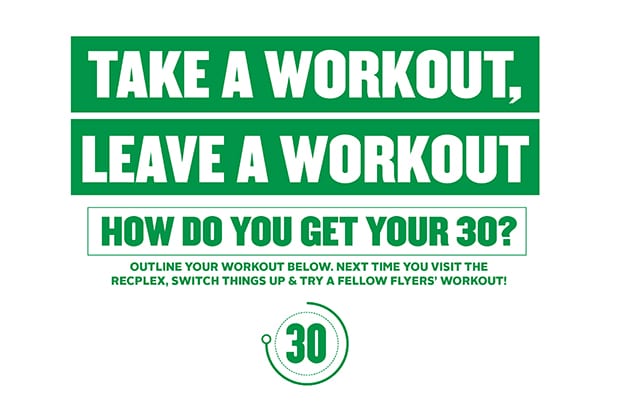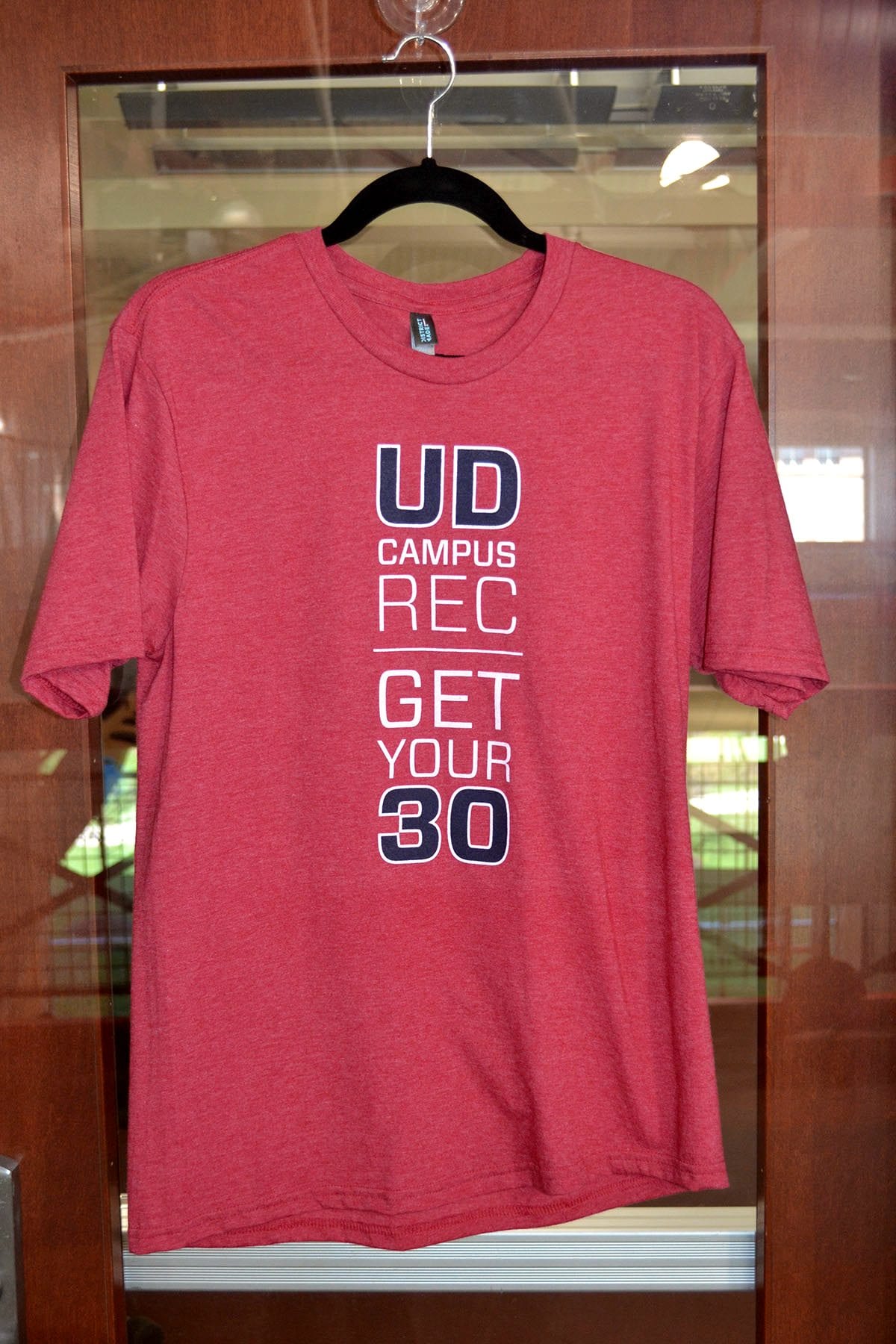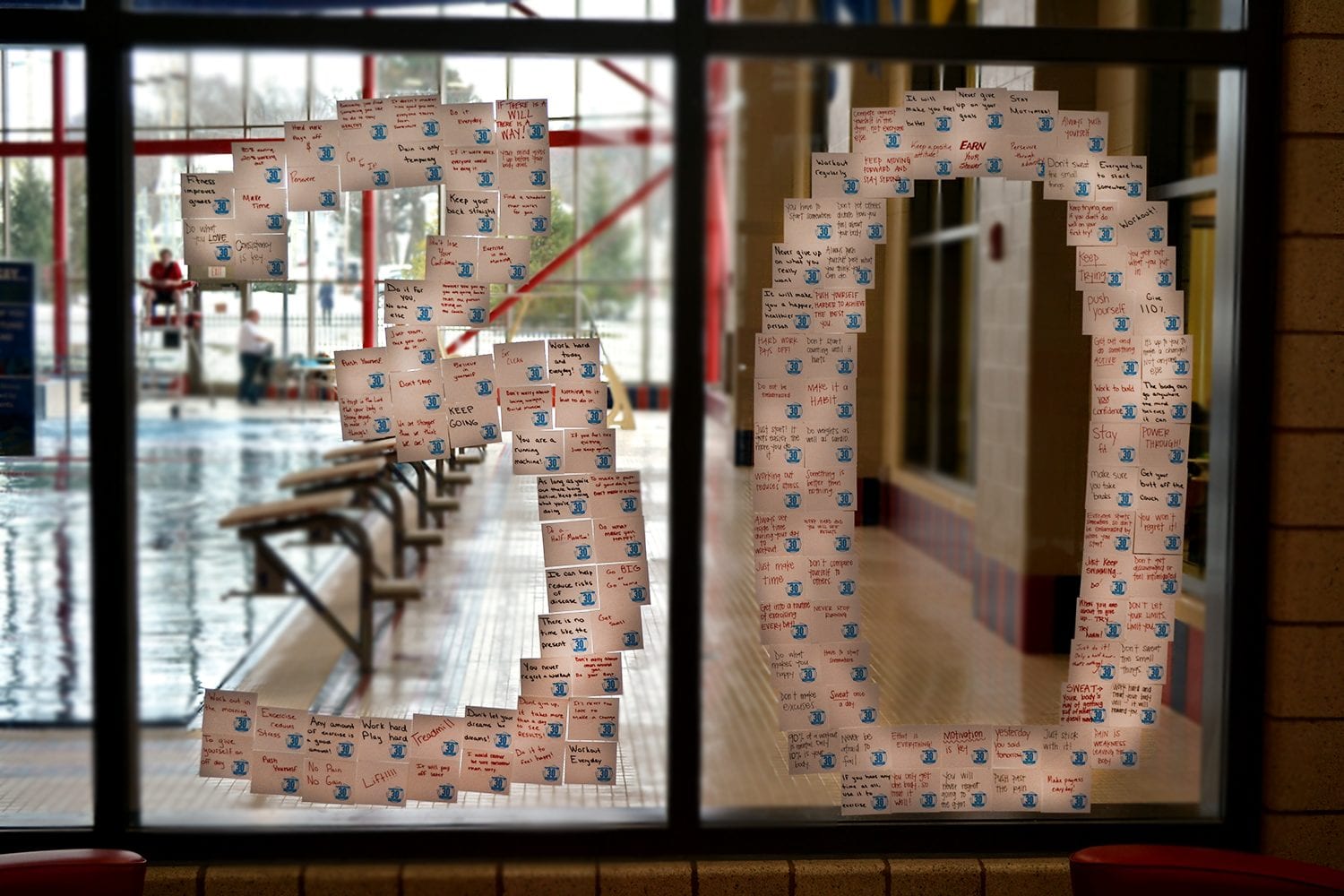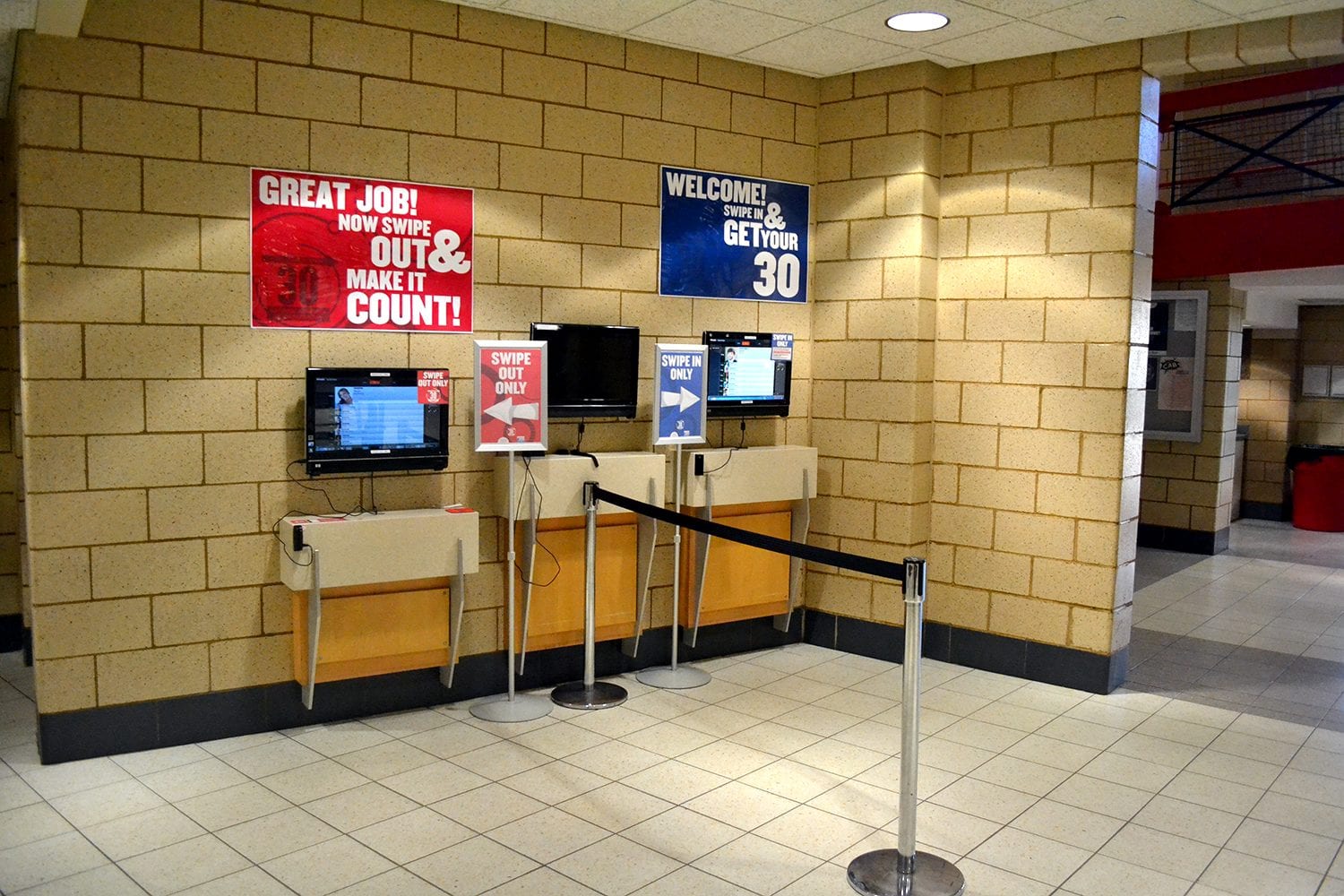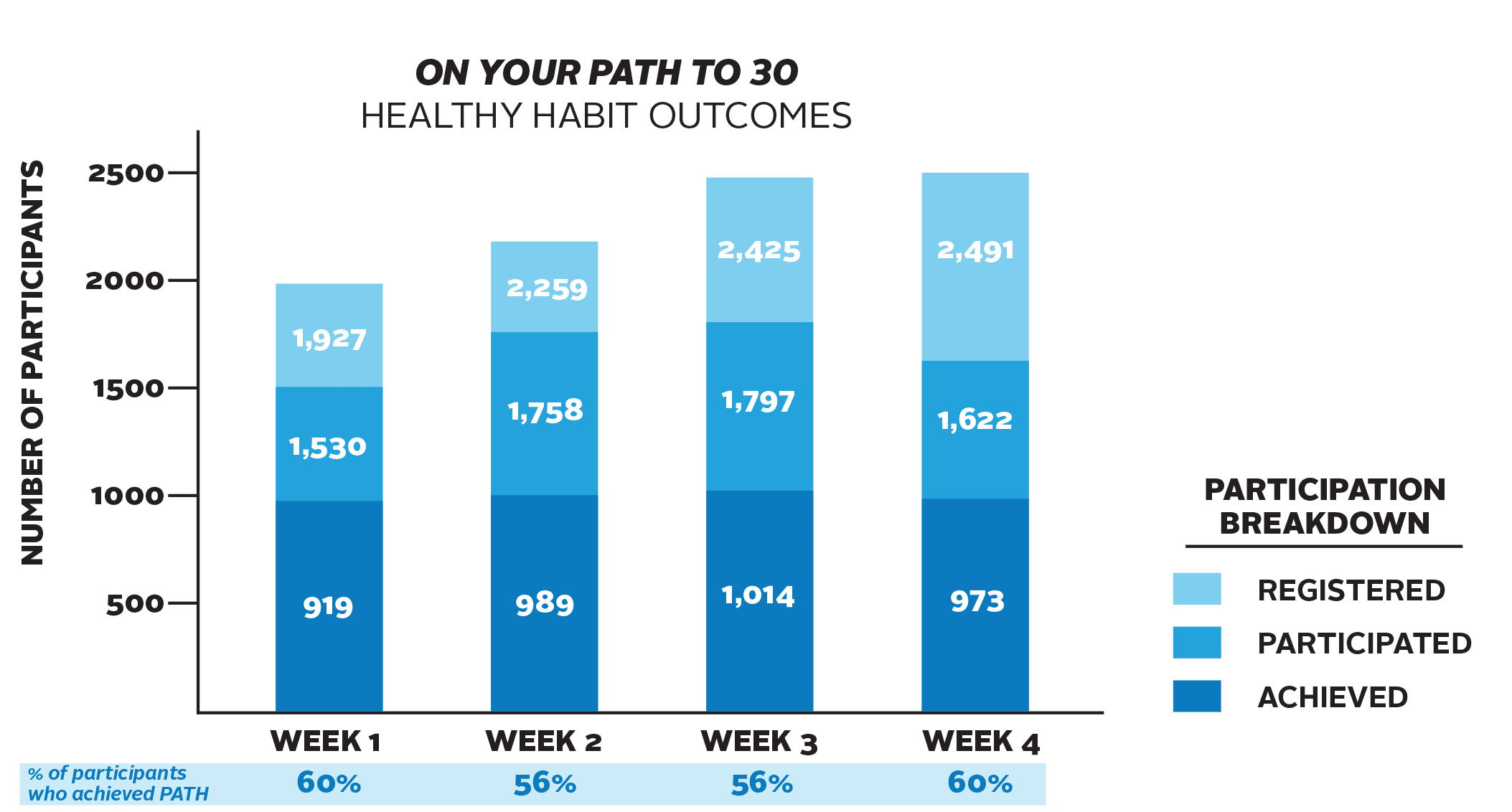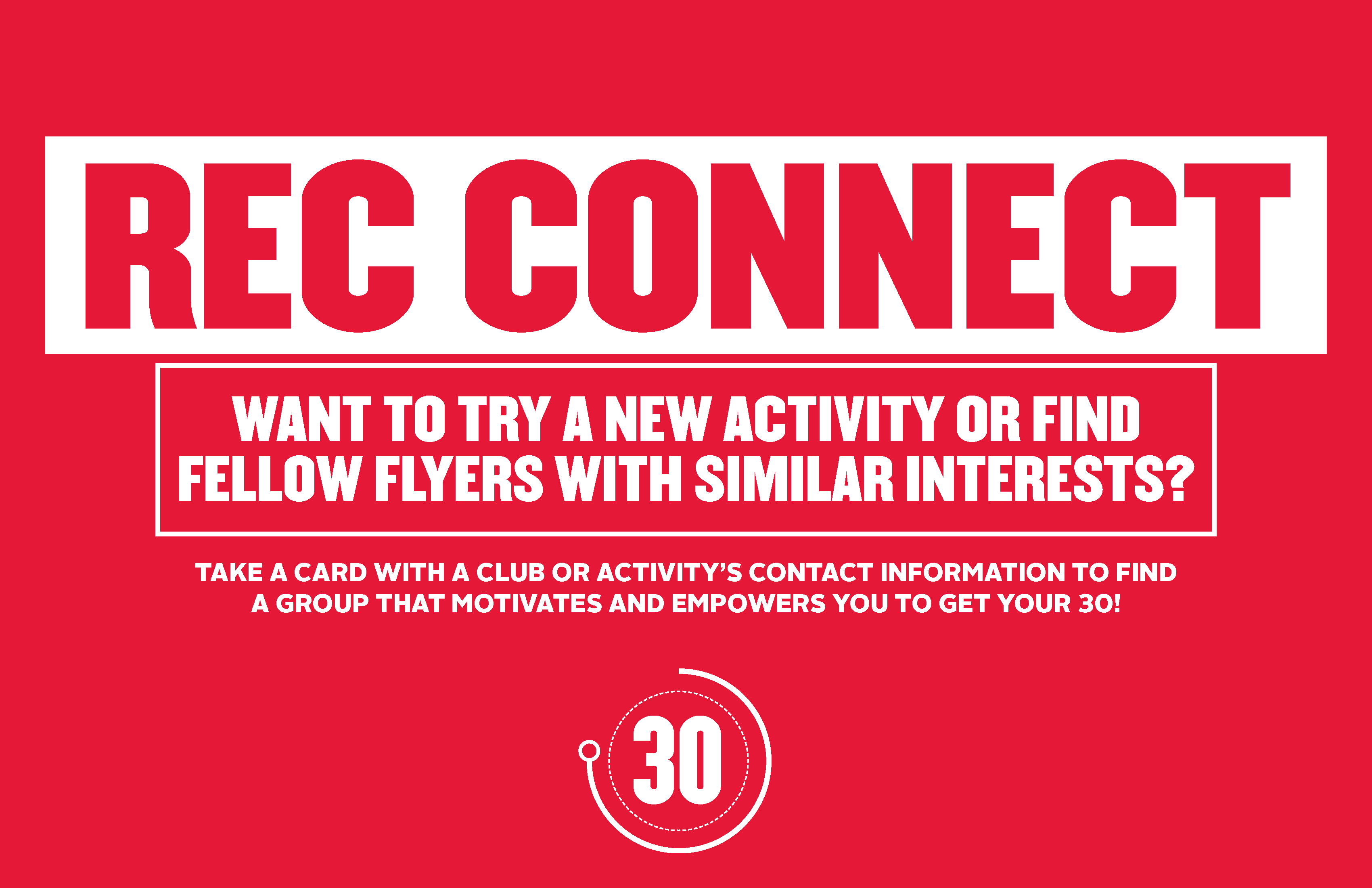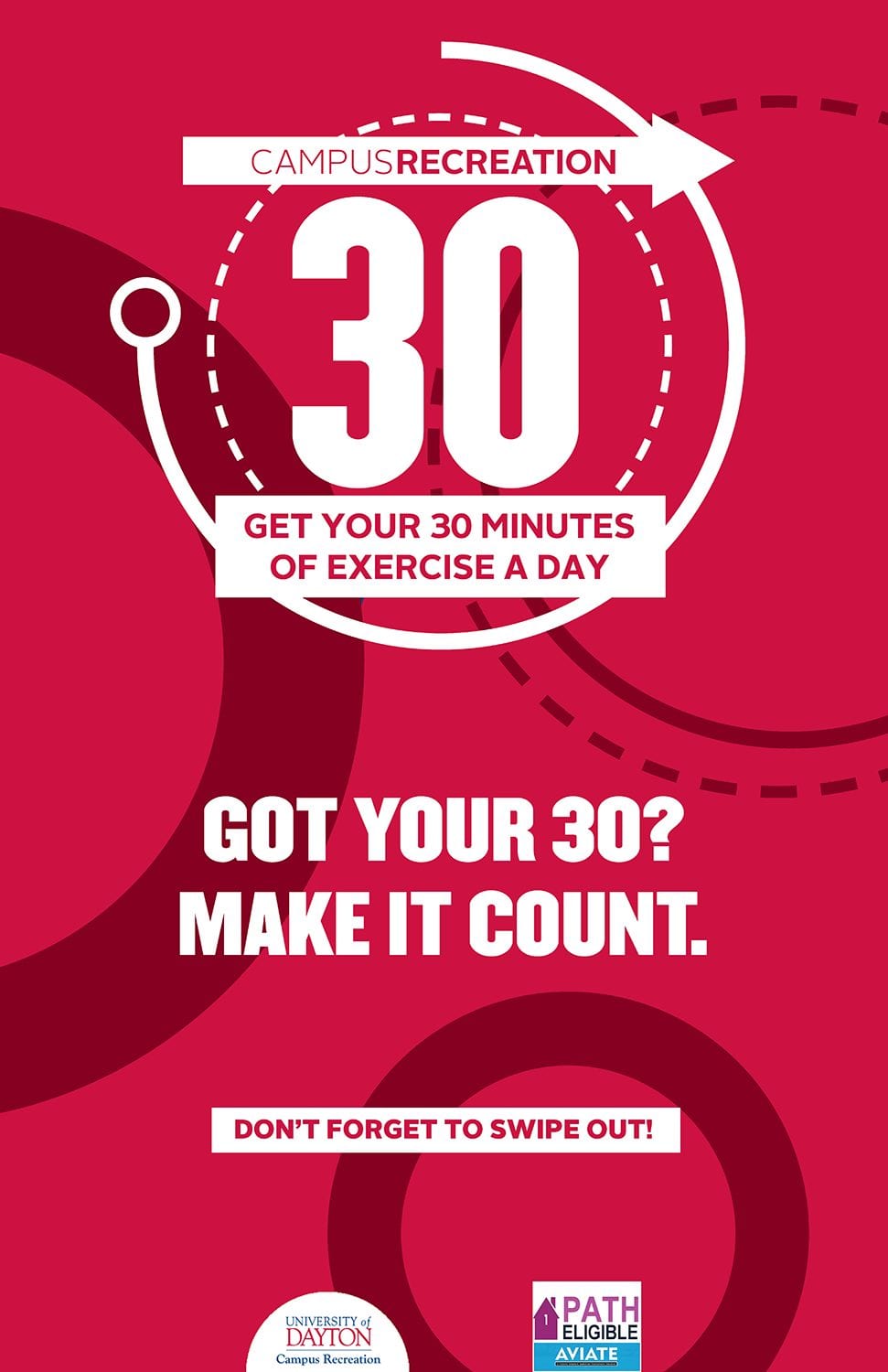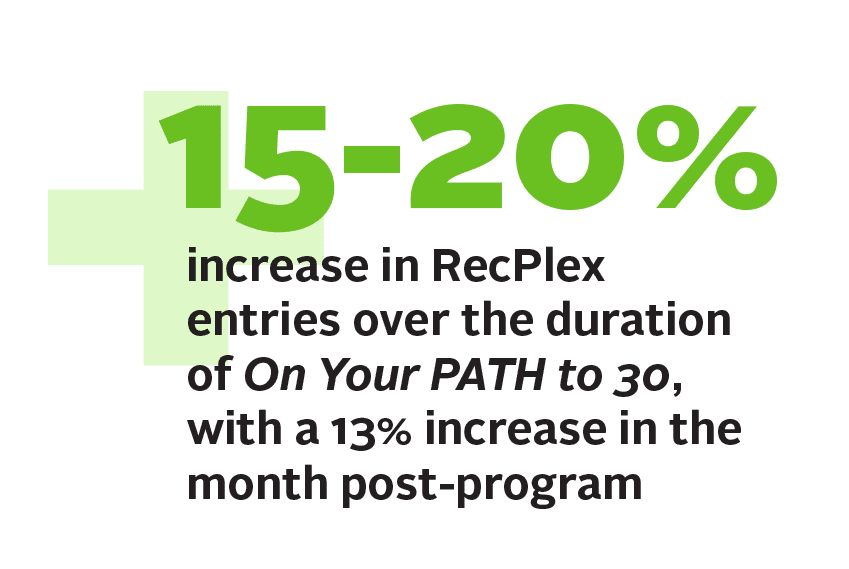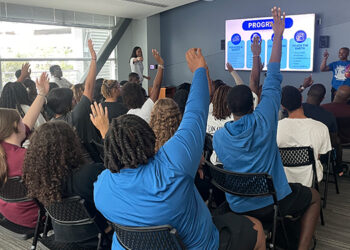The University of Dayton (UD) officially launched the On Your Path to 30 program during the 2015-2016 academic year in order to engage the student population.
The mission of the program is to increase student engagement in physical activity at the RexPlex and create sustained behavior change. During the program, the RexPlex saw a 15 to 20% increase in entries, with a 13% increase in the month post-program.
Melissa Longino, the director of Campus Recreation at the University of Dayton, highlighted key components of the initiative.
Have A Goal
Before you invest time in developing a program, identify your goal. Each program implemented within your recreation center should be intentional, not just crafted on a whim. While the motive for this program can be duplicated, it can’t just be boxed up and offered anywhere.
“What are you trying to achieve?” said Longino. “Don’t try and do the same thing we did. The initial goal — that is the same. But what are you really trying to achieve on your college campus? Make sure this program really meets with those needs of your student population.”
Data, Data, Data
Data and assessment is your best friend when developing new programs to engage the student population. For this reason, Longino and her department conducted a survey with the goal being to find out how students on campus viewed health, fitness and wellness.
“We wanted to understand our students,” explained Longino. “How many minutes of exercise do they think they need a day? What do they think are the benefits of working out? What are the barriers that prevent them from exercise?”
Through this survey, the department learned the main barriers to exercise for students were lack of time, accessibility — the facility being too crowded — and lack of motivation.
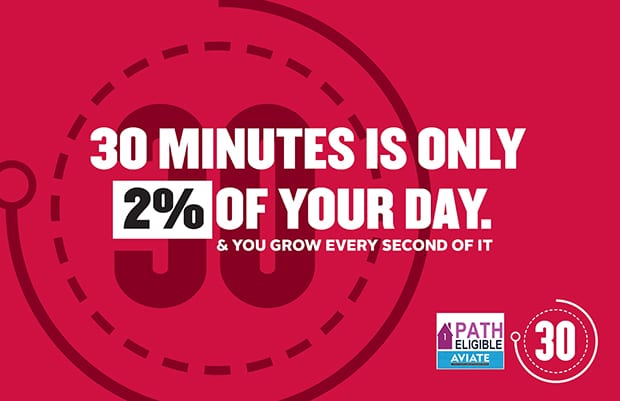
Break Down Barriers
UD Campus Recreation used these insights to craft the On Your Path to 30 program. As many said, the main barrier keeping them from using the RexPlex was lack of time. However, research by the American College of Sport Medicine and the Centers for Disease Control and Prevention supports that adults require at least 30 minutes of moderate to vigorous exercise daily to maintain a healthy lifestyle.
“On Your Path to 30 taught me about the importance of utilizing well-backed research in the field as the platform for the program’s design, such as the American College of Sports Medicine and Center for Disease Control and Prevention,” said one staff member at the RexPlex. “There’s a lot of exercise ‘advice’ out there that students are influenced by, whether it is through peers, various websites on the Internet, or others that they have previously looked up to when they were younger — high school coaches, parents, etc. From pre-and post-assessment that was done within the program, it was clear students conceptualized their exercise expectations very differently, both in the amount — 30 minutes, 45 minutes, 1 hour or 2 hours — and the type — strength, flexibility, and cardio — that they thought they needed to do.”
The survey indicated that only 27 % of students knew about the 30 minutes of recommended exercise. By embarking on a campaign to educate students, UD began to break down the main barrier of access to engage the student population on a larger scale.
Provide Incentives
On Your Path to 30 is a month-long program. Throughout the four weeks, students must check into the facility and complete 30-minutes of exercise four of the seven days of the designated week. In order to encourage students to not only register for the program but also complete it, the department provided several incentives.
To start, students who achieve the exercise requirement will earn one Points Accumulated Towards Housing (PATH) per week. Students can earn a total of four PATH points at the end of the program.
PATH points are given by the department of Housing and Residence Life. Students earn PATH points by participating in various activities on campus that are aligned with the university’s learning outcomes. As students earn points they achieve a higher priority with the housing assignment process. Since 98% of UD students live on campus for all four years, this is quite the incentive.
In addition, students who complete the program will also receive a “Get Your 30” T-shirt to commemorate their achievement.
“We all know the value of a T-shirt,” said Longino. “And it was a way for us to continue the messaging of the program around campus. The T-shirts always have a 30 involved with it. So, it is awesome to see people walking around campus wearing the shirts because it is continued messaging about the program. This way our messaging isn’t just coming from the department, but it is peer-to-peer.”
Collaborate
Running an effective and robust campus recreation department rides on having the support of your campus community. Does the university leadership understand the role recreation plays in the development of students on campus?
“Campus partners are going to be your best biggest allies in this effort,” said a staff member of UD Campus Recreation. “Get them involved and invested if possible. How can they help you spread the word and identify readily available audiences and groups that are already interested in your program?”
Is there other partnerships on campus, besides housing and residence life, that could benefit the program? “Consider integrating the program into other pre-existing university wellness programs that may offer discounts on health insurance or other incentives for faculty/staff who want to participate,” suggested another member of the UD Campus Recreation team.
Student Staff are the Best Resource
Before launching the official On Your Path to 30 program, the department started small, testing the program on 200 to 250 student staff the year before. AThis allowed them to see:
- What the program would look like
- Get student input
- Make the necessary tweaks before launching in order to best engage the student population
“Educate your student staff. Hands down that is the most critical part of this entire project,” explained one staff member. “It needs to be common language among all areas, and comprehensive details should be handy and easy to reference should questions come up. You’re going to have ‘hearsay’ that moves around regarding correct and incorrect aspects of the program, but having a united front of 250 student staff who know where the actual information is will help diffuse that potential. This is also your best marketing group — they’ll ideally pass along the info just in conversation as they teach classes, help spot someone in the weight room, etc.”
Get Creative
Finally, when developing a program of this caliber, it is crucial to get creative. The staff at UD came up with a few program enhancing ideas to engage your student population:
- Engage in “challenges” with other university rivals or pre-existing university groups around 30 minutes of physical activity a day in healthy competition.
- Explore how the program can be integrated into existing fitness technologies. Use fitness trackers and apps that will allow a user to login and track their successes and achievements over time. Integrate them into the program’s design.
- Provide easy and additional structure and support for program participants to engage in various types of exercises that they may be unfamiliar/uncomfortable with — i.e. on-site or walk-in personal trainer days.
- Find creative ways to allow program participants to engage in physical activity beyond the centralized recreation center. This helps reach more varied populations — i.e. student athletes, commuter students, etc.
- Target a variety of different exercise types to cast a wide net. Go beyond the fitness center. This gives you the opportunity to highlight the benefits of different areas that students may see as just “recreation.”
- Do this from a team perspective because you will have different input and insights. The way a competitive sports individual looks at activity in recreation looks different than your fitness or marketing person. So to have the depth of ideas and creativity, that piece has been invaluable.



